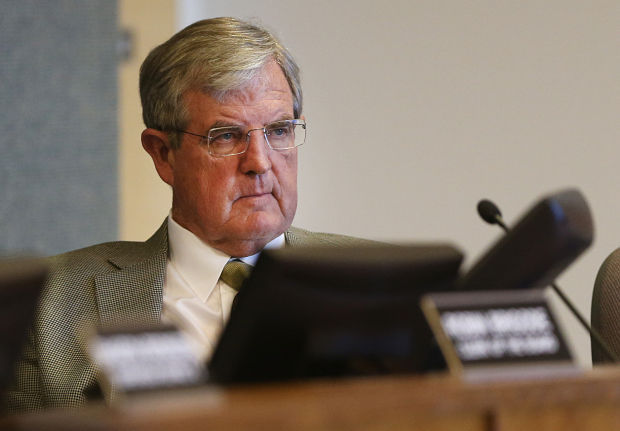Pima County employees could see pay raises that range from 2 to 6 percent next year under a compensation package put forward by County Administrator Chuck Huckelberry.
In general, lower-paid employees will enjoy a higher rate of pay increases than their better-paid co-workers, according to the plan that would need approval by the Board of Supervisors to be implemented.
“It can be argued that lower wage employees have been the most affected by the economic recession; hence, they deserve first consideration in elevating wages, increases, and cost of living impacts,” Huckelberry wrote in a June 22 memo outlining the plan.
Sheriff’s deputies and corrections officers will see raises of between 2 and 20 percent. For a number of years, the Sheriff’s Department and union representatives have complained about wage compression. They say senior deputies have seen their wages stagnate and new officers are hired at pay levels near or equal to more experienced employees. The raises are intended to address that concern.
Raises for all civilian county employees would cost about $11.6 million for the first year. Raises for eligible law enforcement officers would cost $3.8 million for the same period. The total cost of the pay-raise plan is about $15.4 million, according to the memo. The cost to the general fund would be about $10.7 million.
In his memo, Huckelberry writes that one of the proposal’s goals is that it “not rely on a tax increase not yet enacted by the board.”
The board will consider the proposal at its July 5 meeting. It is also expected to vote on the final county budget.
Though he had recently pushed for more sizable raises, Sheriff Chris Nanos described Huckelberry’s plan for his deputies as “fair.”
“I can’t sit here and pound my gavel and demand, demand, demand and not expect to give some,” he said. Nanos adding that the proposal “does deal with decompression. It gives some decent raises, more-than-decent raises.”
Nanos had originally requested raises costing about $7.4 million, which Huckelberry described as “unreasonable and unfair.”
While Nanos praised the plan, Kevin Kubitskey, president of the Pima County Deputy Sheriff’s Association, sharply criticized it.
The plan his union put forward would have been “full decompression,” and would have accounted for all the annual step increases that have not been funded since 2008, he said.
“How is that acceptable that people who are involved in shootings and getting injured and being exposed to everything you could possibly imagine, how is it unreasonable that they should move according to the plan they were promised?” he added.
Both Nanos and Huckelberry disputed that there was ever a contractual obligation to provide annual step increases to deputies.
Huckelberry’s plan also proposes ending step compensation plans altogether, and replacing them with “pay ranges and employee progress in the range based on merit, not longevity.”
Kubitskey said the county does not have the legal right to do so, and his association is consulting with an attorney on the matter.
To pay for the $15.4 million in raises in the first year and to maintain them in coming years, Huckelberry proposes a number of measures. Those include reducing health benefits for new employees, requiring employees to shoulder more health-care costs, mandating a personnel attrition savings of 1 percent for all departments, and reducing incarceration costs at the county jail.
A representative of the Service Employees International Union in Pima County, which represents nearly 4,000 county workers, did not respond to requests for comment on the plan.
Department heads will be required to “certify” that they understand the budget cuts and attrition required in their offices before funds for raises are transferred to them, according to the memo.
The estimated cost-saving measures add up to nearly $9 million over the next year, with much of the remainder of the plan’s costs covered by $5 million from the county’s Property Tax Rate Stabilization and Compensation Fund.
As a part of the plan, new county employees would not receive the $1,000 per-employee health-saving account contributions current employees enjoy. Additionally, Huckelberry will propose that current employees be required to match county health-saving account contributions starting in the 2017-18 fiscal year.
As it stands, county employees pay roughly 14 percent of their health insurance premiums, with the county covering the remainder, according to data in the memo. Through several measures, including equal sharing of future insurance cost hikes between the county and its employees starting in fiscal year 2018, Huckelberry advocates eventually getting to an employee contribution of 25 percent, which the memo says is necessary for “long-term financial stability.”
When asked if some county employees may balk at the prospect of raises being paid for with increased benefit costs, Huckelberry defended the benefits as “some of the best of any in the state or region, private or public.”
“We have the best benefits, so now we’re raising pay. But yeah, we might begin to more equalize the benefits side,” he said.





